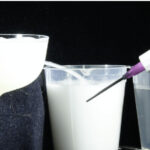2023-07-10 プリンストン大学
◆この成果により、鉄触媒を使用してバイオマスを価値のある炭素材料に変換する可能性が示されました。両研究グループの連携は、環境にやさしい炭素利用の分野を前進させるための研究プロジェクトへと発展しました。今後は、バイオマスを持続可能に利用する戦略を開発し、プラズマを使用した製造プロセスの研究など、さまざまな研究を展開する予定です。
<関連情報>
- https://engineering.princeton.edu/news/2023/07/10/engineers-reveal-secrets-behind-green-graphene
- https://pubs.acs.org/doi/full/10.1021/acsanm.2c05312
- https://chemistry-europe.onlinelibrary.wiley.com/doi/10.1002/cssc.202201864
エネルギー貯蔵応用のためのセルロースのグラファイト化を触媒する鉄ナノ粒子 Iron Nanoparticles to Catalyze Graphitization of Cellulose for Energy Storage Applications
Lina M. Romero Millán, Amel C. Ghogia, Claire E. White, and Ange Nzihou
ACS Applied Nano Materials Published:February 24, 2023
DOI:https://doi.org/10.1021/acsanm.2c05312

Abstract
The production of highly graphitic carbon from bioresources is an environmentally friendly approach to synthesize graphene for energy storage applications. Iron catalytic graphitization of cellulose, the most abundant biopolymer on earth, is an alternative approach as until now, cellulose has been classified as poorly graphitizable material. In this study, the impact of processing temperature and iron impregnation on the extent of graphitization of the cellulose-derived graphitic carbon nanostructure is uncovered by combining Raman spectroscopy, X-ray diffraction, transmission electron microscopy, and X-ray pair distribution function analysis. Raman spectroscopy is used in an innovative way to describe the evolution of the average graphitic phase size where the ash content misguides the X-ray diffraction analysis. A correlation was established between (i) the in-plane crystallite size La and the ID″/IG first-order ratio, (ii) the out-of-plane Lc crystallite size and the IG/Itot′ second-order ratio, and (iii) the second-order Raman IG′/Itot′ ratio and the average number of carbon layers per carbon crystallite. For iron-impregnated cellulose, phase quantification and analysis of the spatial distribution reveal highly crystalline rhombohedral graphite surrounded by a nanocrystalline carbon matrix. We explicitly show that traditionally non-graphitizable carbons can be used to form a graphite-like structure with multilayers of graphene sheets by careful addition of widely available nontoxic metal as catalysts. The study also shows that the impact of the catalyst is much more effective than the temperature in the nanostructure transformation. The proposed approach and the results obtained provide interesting insights that should stimulate further works aimed at extending the knowledge in the field.
バイオ炭からのグリーン・グラフェンの合成と成長、鉄触媒の磁気特性から明らかに Synthesis and Growth of Green Graphene from Biochar Revealed by Magnetic Properties of Iron Catalyst
Amel C. Ghogia, Lina M. Romero Millán, Claire E. White, Ange Nzihou
ChemSusChem Published: 06 November 2022
DOI:https://doi.org/10.1002/cssc.202201864
Graphical Abstract
Show your facets: The graphitic carbon crystallite size increases with processing temperature, and the highest processing temperature of 1800 °C is correlated with large metallic iron particles possessing a relatively broad distribution of sizes that are in the most reduced state. The large facets of the bigger iron particles provide regions for precipitation of graphitic carbon, where precipitation is promoted by the reduced metallic iron
Abstract
Understanding the mechanism of iron-catalyzed graphitization of biomass is an important step for the large-scale synthesis of green graphene. Although iron is known to be the most active transition metal for the catalytic graphitization of cellulose-derived biochar, the direct effect of the iron molecular structure on the formation of highly graphitic carbon remains elusive. Here, biochar was produced from pyrolysis of iron-impregnated cellulose at three different temperatures (1000, 1400, and 1800 °C). X-ray diffraction, X-ray photoelectron spectroscopy, and magnetic measurements were used to probe changes in biochar nanostructure catalyzed by the inclusion of iron. An increase of pyrolysis temperature led to an increase in the iron particle size and the degree of iron reduction, as well as the formation of larger graphitic carbon crystallite sizes, and these two attributes of iron were seen to positively affect the biochar graphitization usually challenging under 2000 °C.




